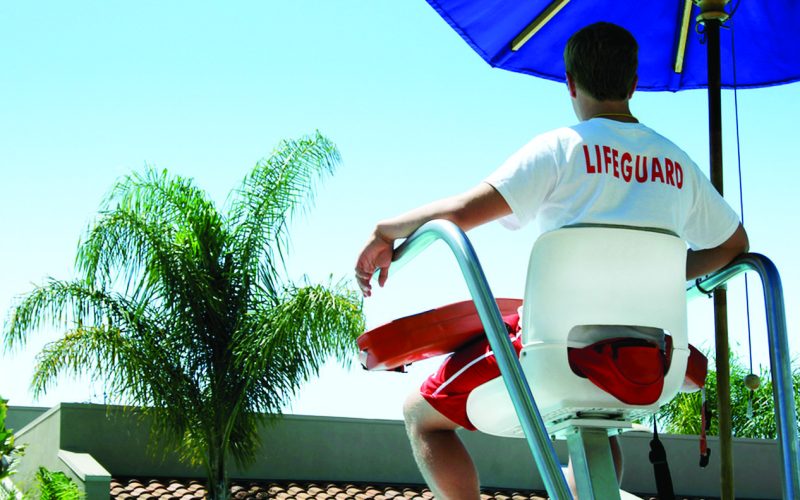Introduction
In 2025, lifeguard certification has undergone significant transformations to align with modern safety standards, technological advancements, and changing aquatic environments. As the demand for highly trained water safety professionals increases, certification programs are evolving to deliver more rigorous, inclusive, and tech-integrated training.
This article provides an in-depth exploration of how lifeguard certification has changed in 2025, what new elements have been introduced, and how these modifications impact both aspiring lifeguards and aquatic facility operators.
Stricter National Standards and Unified Curriculum
In 2025, lifeguard training became the same all across the country. This happened because a group called American Lifeguard USA worked together to make one set of rules for everyone.
Here’s what’s new:
- Lifeguards now train for at least 32 hours (before it was 24 hours).
- Everyone learns the same way to do CPR, use an AED, and give first aid.
- Lifeguards practice real-life situations to get ready for emergencies.
- They have to keep learning and training every year.
Because of these changes, lifeguards everywhere get the same good training to keep people safe.
Technology Integration in Training Modules
In 2025, lifeguard training started using cool new technology to help lifeguards learn better.
Here are some new tools they use:
- Virtual Reality (VR): Trainees wear special goggles to practice rescue situations, like helping someone with a neck injury or saving swimmers in trouble.
- Smart Computers: These watch how lifeguards move and where they look during practice to make sure they are paying close attention.
- Drones and Robots: These help lifeguards learn how to do rescues by showing them in action, both above and underwater.
These new tools help lifeguards practice tough situations safely so they can make quick, smart decisions when it really counts.
Mental Health and Psychological Preparedness
Being a lifeguard can be very stressful because they have to help people in scary or hard situations. So, in 2025, lifeguard training started teaching how to handle these feelings.
Lifeguards learn about:
- How to stay calm and manage stress
- Talking about what happened after a tough rescue to feel better
- How to speak clearly and kindly during emergencies
- How to solve problems if people get upset at the pool or beach
These lessons help lifeguards stay strong not just in their bodies, but also in their minds and feelings.
Specialized Certifications for Varied Environments
In 2025, lifeguards started getting special training based on where they work. This helps them be better prepared for the kinds of emergencies that can happen in each place.
Here are the new types of lifeguard training:
- Beach & Lake Lifeguards: Learn how to handle strong waves (like rip currents), watch out for sea animals, and use jet-skis to rescue people.
- Pool Lifeguards: Get extra training for handling pool chemicals and safely getting everyone out if there’s an emergency.
- Waterpark Lifeguards: Practice rescuing people from slides, wave pools, and helping many injured people at once.
Now, places like beaches, pools, and waterparks often want lifeguards to have the right kind of training for their location. This helps keep everyone safer
Higher Recertification Standards and Ongoing Education
Unlike previous years, 2025 recertification isn’t just a refresher course. It’s a re-validation of core competencies, requiring:
- Annual proficiency tests (written and practical)
- CPR/AED certification renewal every 12 months
- Mandatory completion of updated modules on new rescue techniques or technologies
- Minimum of 10 hours of in-service training per quarter
This approach ensures that lifeguards remain current and competent, reflecting the dynamic nature of aquatic safety requirements.
Inclusivity and Accessibility in Lifeguard Training
Modern lifeguard programs in 2025 emphasize diversity, equity, and inclusion. Certification programs now offer:
- Multilingual instruction materials
- Adaptive training for those with disabilities (e.g., deaf or hard of hearing lifeguards)
- Gender-inclusive locker rooms and facilities
The focus on accessibility has opened opportunities for more individuals to become certified lifeguards, enhancing diversity within the field and broadening community representation.
Emphasis on Legal Knowledge and Risk Management
Given the rise in litigation and liability concerns, lifeguards now receive training in:
- Risk assessment and facility audits
- Documentation of incidents
- Understanding of local laws and duty of care obligations
- How to testify and prepare for legal proceedings
These topics ensure lifeguards are aware of their legal responsibilities and can act in a way that protects both patrons and the facility.
Integration with Health and Emergency Services
Lifeguards in 2025 are no longer isolated responders. Certification programs include protocols for cooperation with EMS, police, and fire departments. Trainees learn:
- Effective handoff communication
- Scene control until higher-level responders arrive
- Basic triage methods during mass casualty events
This multi-agency collaboration prepares lifeguards for complex emergencies, where team coordination can be the difference between life and death.
Eco-Conscious Lifeguard Practices
Sustainability has become a priority in 2025 lifeguard training. Certification now includes:
- Environmental stewardship modules
- Water conservation techniques
- Eco-friendly pool maintenance practices
- Protocols for wildlife interaction in open water rescues
These practices align lifeguard duties with global environmental goals, ensuring that safety efforts do not come at the planet’s expense.
Digital Certification and Credential Portability
Gone are the days of paper certifications. In 2025:
- Digital certification platforms allow real-time verification of credentials by employers.
- Lifeguards can store and share certifications via apps.
- Employers use blockchain-based systems to verify authenticity and renewal status.
This makes employment transitions smoother and helps facilities ensure compliance with updated training standards.
Lifeguarding in 2025 is Smarter, Safer, and Stronger
The evolution of lifeguard certification in 2025 reflects a profession that is more advanced, specialized, and connected than ever before. From cutting-edge tech and mental health education to environment-specific training and legal preparedness, today’s lifeguards are equipped to meet the complex demands of modern aquatic environments.












